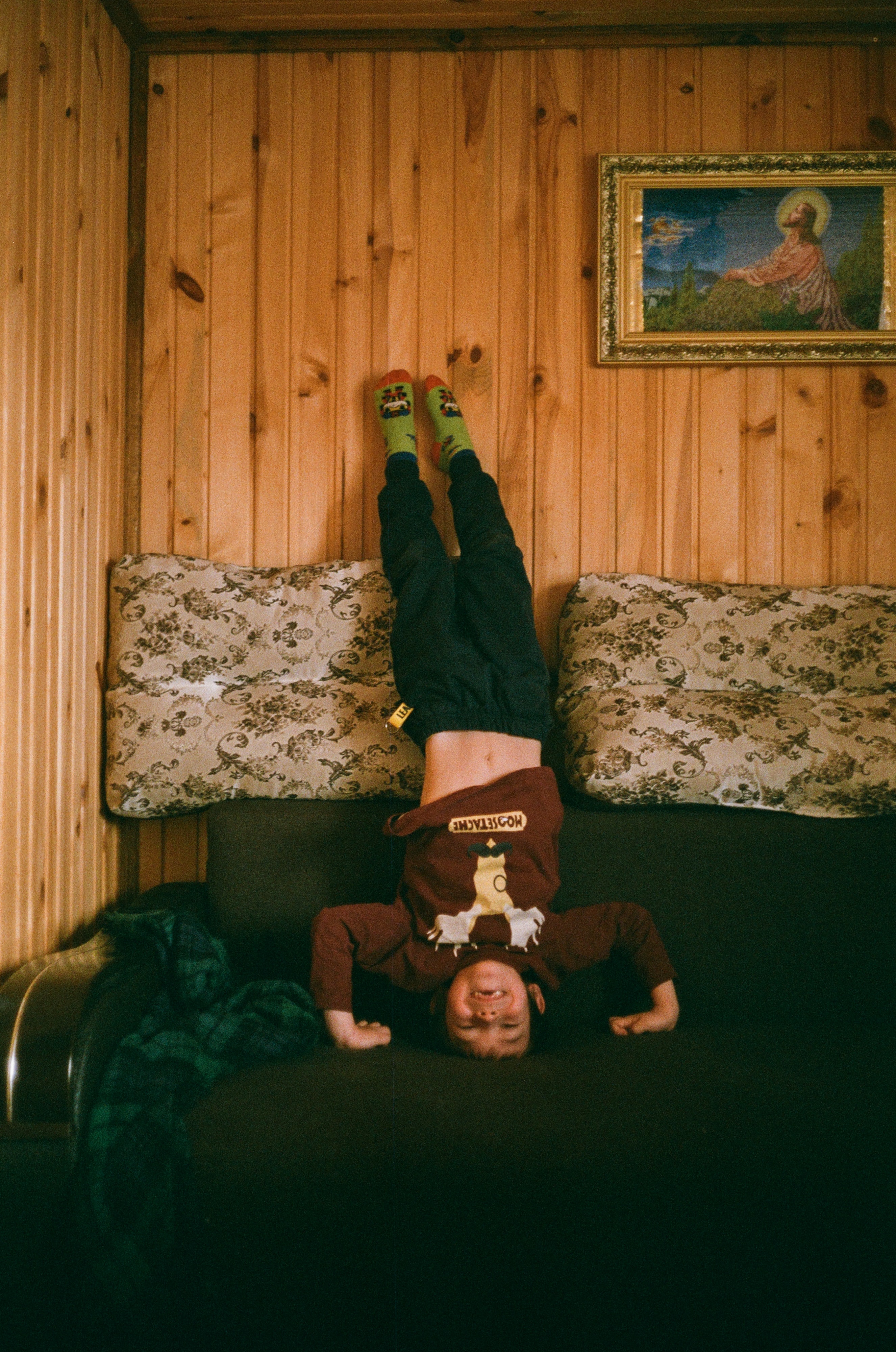No grit, no pearl. - Lama Surya Das
We have been through a sort of reckoning, each of us personally, and society as a whole, over the past few years. As I consider the qualities that have been helpful to me in this long, dark season, the two that stand out are adaptability and grit.
Adaptability means that in order to avoid needless suffering, I need to be flexible about what comes my way, and not be too sentimental or nostalgic about what was possible in the past. Yoga helps to develop adaptability by improving our mental and physical flexibility (for more thoughts on yoga and adaptability, inspired by a resilient 6-year-old, please check out Sadie, Age 6: Master Adapter.)
Grit is also an essential ingredient, but it is a little trickier to understand. Sometimes people talk about grit like it’s a built-in quality, something people are innately born with. I like to think of it as a skill to be learned. Let’s say I’m learning something new: for instance, how to use accounting software for our yoga business. This is not a strength of mine, and I can often get stuck, and things can start to feel impossible. I’ll get in touch with a support team – through a chat box, on a website – to answer my questions. They will refer me to the customer service team on the phone, and then I have to spend an hour on hold – only to be sent back to the chat box support team, who still can’t answer my questions!
When that happens, I feel an urge to scream. But, at that point, I have an opportunity to practice grittiness. I might take a break, breathe, run, read, or whatever I need to do to chill out. Sometimes that feeling of frustration only lasts a few moments. Sometimes it lasts a day or two. Sometimes it can be a week before I can return to the frustration-generating activity – whatever it may be. Grit, to me, is experiencing that feeling of total frustration, and being able to work through it. As grit expert Angela Duckworth says, “as much as talent counts, effort counts twice.”
Challenges Help Us to Learn Grit
This process might sound like it’s nothing but pain, but there is a clear reward (beyond the obvious one, which is getting better at something). Have you ever noticed that, when you push through something frustrating, there is a feeling of elation once you have reached it? Tough-but-compassionate teacher Cerrissa Koza teaches that doing stressful things on purpose inoculates us against the stresses of life. “When we are dealing with frustration…it helps to practice it in our physical bodies, because then we’ll know what to do when we experience it in our lives," she says.
Michael Easter echoes this sentiment in his book, The Comfort Crisis. In talking to many experts, Easter concludes that doing difficult or stressful tasks consciously is a life hack. Difficult tasks strengthen our ability to deal with the challenges that life will inevitably throw our way.
As a child, I didn’t learn the skill of sticking to things. When things got hard or I became frustrated, I would simply quit. When I discovered yoga as a young adult, it was one of the first activities that resonated with me, and that left me feeling motivated to grit my way through! The transformational impact of yoga on my body and mind was so obviously beneficial that there wasn’t room to negotiate, even for a seasoned negotiator like me. But it wasn’t until I experienced the obviousness of needing to pursue yoga through thick and thin that my grittiness began really forming.

If I had discovered yoga sooner, I imagine that moving through challenges and learning experiences would have been much easier. I might have even stuck with activities I actually really loved. For instance, in middle school, I longed to express my (giant, dramatic) feelings by learning to act. I signed up for a local theater class, and I liked it very much. I always felt that the ways I thought and felt were out of proportion to what they should be. Theatre was different. I was actively encouraged to express my big feelings in this big way. It was fun and so validating.
While falling in love with theater, I also fell in love with a cute boy in my class. After doing a dramatic sketch with him, I was his forever – or so I thought. When, weeks later, I arrived at the community centre room where class was held, I found him holding hands with another girl. I quit class that day and never returned. I have thought, many times, about how supportive an acting background would have been as a teacher, in business, through periods of anxiety, and in general to help with the countless times in adult life we when we need to “fake it ‘til we make it.”
Theater was not the only thing I quit. There is a long list of activities, many of which would have served me professionally, and others personally. Dance. Creative writing. Woodworking. Piano. These only to name a few. Grit has been a skill I’ve had to learn as an adult. I am sure that learning it in childhood, bit by bit, would have been easier than trying to rewire my stubborn adult brain.
Kids, Grit and Yoga
As a Kids Yoga Teacher, I often think about how to teach kids to be grittier from an early age. I’m not going to lie, it’s not an easy time in human history to teach grit. Our kids have access to so much comfort and entertainment that it sometimes feels like an upstream swim. However, my desire for our kids to learn to do hard things outweighs the challenge of teaching them. Hey wait! That sounds kind of like...grit!
Here are a few ideas to help kids get grittier through yoga that our team has collected:
Staying in Poses Longer
Yoga Buggy teacher Flora, whom I can confidently describe as a creative genius, offers these ideas for increasing the length of time that kids hold poses. Holding poses a little longer than we feel like it increases stamina (AKA grit), in both kids and adults.*
- While in the pose, count to ten forward or backwards, or in another language, or in invented numbers!
- Make animal noises (i.e. in mouse pose, squeak three times. Who can squeak the loudest?)
- Have kids freeze while the teacher "distracts" them (i.e. - in tree pose, the teacher goes to pick their apples!)
Practice Dolphin Push-Ups
These are awesome for older kids. They are considered a prerequisite exercise for a headstand, which, done against a wall and with careful instructions, can be done safely with kids.
Here’s how to do a Dolphin Push-Up:
- Crouch down on your mat in a “stalking tiger” shape.
- Bring your forearms flat on the mat, splay your elbows away from each other, and clasp your hands together.
- Using the strength of your trunk, push the rest of your body (forearms stay on the mat) all the way up! Your bottom should be pointing in the air, like a downward dog. Then, move your torso forward so that your face comes over your hands, like a plank. Push all the way back up, and then all the way down! Do this ten times in total. The slower you go, the more challenging the pose becomes.
The ability to do ten good Dolphin Push-Ups shows two things:
- Kids have the physical readiness for headstands
- Kids have the maturity, i.e. emotional readiness, to follow the instructions precisely enough to keep their bodies safe from injury.
I ask kids to complete at least ten Dolphin Push-Ups, all the way up and back down to the ground each time. If they can do ten, that’s great. They can try eleven next time. If they can only do two, no problem! Try for three next time. You can say, “Try doing one more than feels comfortable.” Dolphin Push-Ups are a great strengthening exercise that lets us build up to a headstand at the end of a multi-week series.
Prioritize Yoga Activities Kids Can Lead
Letting kids take the lead has multiple benefits in kids’ yoga classes:
- The teacher gets a chance to see what the kids choose, and so teachers can learn more about how to best work with the child.
- Leading gives kids the chance to lean into the experience of leadership anxiety. Very often kids just need to try something to discover there was nothing to be scared of! For more thoughts on that topic please see It Might Be Your New Favourite Thing!
- Kids often stay engaged for longer if they have the opportunity to lead. Longer engagement = building grit!
There are many yoga activities you can let kids lead. It is important to model leading the activity a few times first, as this gives them a template, so they don’t get too shy or too silly. If they DO get shy or silly, you can just gently redirect them to the “script” that you already taught.
Here are a few ideas for yoga games that kids lead beautifully (all suggestions for kiddos who have at least a few yoga classes of experience).
- Sea / Shore / Shells
- Yogi Says
- Yoga Cards for games like the yoga version of Fitnopoly!
There are so many ways that we can support our kids in increasing grit in daily life. Trying something new, asking them to solve problems themselves, or giving them opportunities to do everything that they are capable of doing on their own are all great options. We have the opportunity to support our children in learning how to endure even when it’s hard. In an uncertain future, it could be one of the most important skills we teach them.
I haven’t failed. I’ve just found 10,000 ways that don’t work. - Thomas Edison
*Please note that the body will be in pain if a pose is held too long. It is essential to train students to listen to pain signals in their bodies every time you are teaching them, so they learn when they might be pushing themselves to the point of injury. For more tips on the “Rules” of kids’ yoga, please see our article Yoga Should Be Fun!
You may also enjoy: Year of the Ox: Yoga Exercise for Kids, Yoga Kids: Mindfulness in a Pandemic, and How Empathy Fosters Inclusion.






